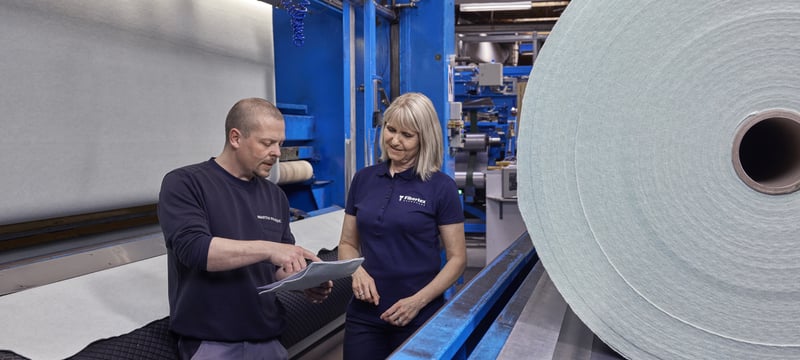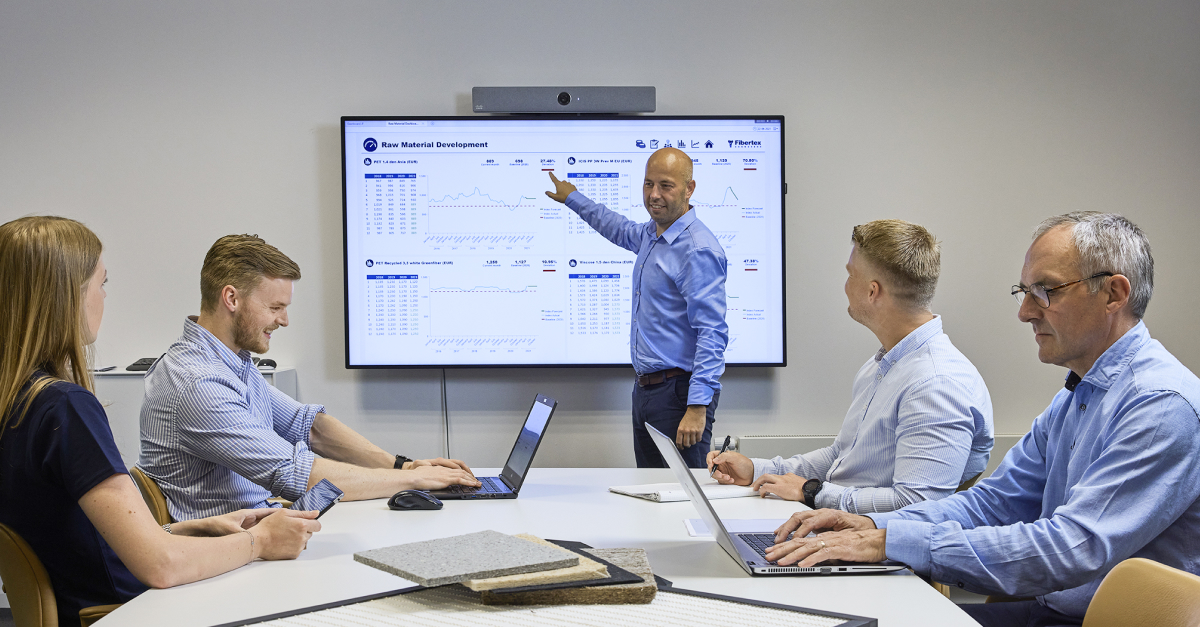Prioritizing Sustainability at Fibertex Nonwovens
Sustainability is a core aspect of Fibertex Nonwovens’ brand identity and manufacturing process. However, it’s just one business area that Chief Data Officer Morten Rodkjær Søndergaard is responsible for analyzing within the organization.
Morten manages the company’s BI and ERP solutions, and the teams that work within both tools. He also leads budget forecasting and reporting and promotes data transparency at multiple levels of the business.
Fibertex Nonwovens’ environmentally conscious practices impact nearly every data set Morten interacts with and directly influence the company’s budget and financial planning tasks. Morten shares that the company’s focus on Environmental Social Governance (ESG) principles has increased in recent years due to a number of factors:
“ESG is becoming an important topic internally because of several European laws that will require us to report on environmental measures starting in 2024,” Morten explains. “Beyond that, our owners also like to present themselves as ESG-oriented, and many of our large customers want us to report on ESG measures. ESG projects, and a general focus on the environment, create opportunities for us to future-proof our business and stand out from our competitors.”
Streamlining ESG Reporting With TARGIT
Today, Fibertex Nonwovens is working on several ESG projects, most of which center around eco-friendly operations and creating a safe work environment. Current initiatives include:
- A Waste Management program designed to track and reduce waste numbers
- An occupational health and safety program to monitor Lost-Time Injuries and train employees on preventative workplace safety measures
- A company-wide focus on the use of sustainable fibers and raw materials in production
- Monitoring and optimizing energy consumption to reduce Fibertex Nonwovens’ carbon footprint
To measure the progress and effectiveness of these initiatives, Morten’s team must collect and analyze multiple data sets from each of Fibertex Nonwovens’ eight production sites.
“Internally, the challenge is data collection and reporting. The people responsible for supplying us with the ESG data are typically from Operations or Quality teams, and they needed an easy way of submitting the data,” says Morten. “This monthly data collection and reporting can be a huge task if done manually.”
This process was time-consuming and often challenging before TARGIT since analysts had to manually collect and organize all the data. What’s more, production managers at each site didn’t have an easy way to share their data with the BI team, which led to reporting delays or data inconsistencies across locations.
Once Fibertex Nonwovens was up and running in TARGIT Decision Suite, Morten and his team began building databases for the measures that don’t exist inside their ERP system. These databases allow production managers to input their own data when it’s time to build monthly ESG reports, even though most of them don’t have a background in BI or data processing.
TARGIT's user-friendly interface delivers a frictionless experience to on-site production and operations teams while providing high-quality data to analysts and BI professionals by enforcing a consistent format across data from all of Fibertex Nonwovens’ production sites.

Increasing Data Visibility and Creating Real Business Impact
Now that Fibertex Nonwovens’ BI team has access to ESG data from the entire organization, they can create comprehensive monthly reports that show how each site is performing toward its ESG-related goals.
These goals and the criteria behind them can easily be adjusted inside TARGIT to account for the unique variables at each site. For example, energy consumption has a different carbon footprint depending on geographic location, so reports are carefully configured to ensure they show a true reflection of performance.
Production managers at each site receive a copy of the latest ESG reports to their email, where they can review their own numbers and compare their performance with other production sites.
This level of data visibility allows them to see the impacts of their efforts, understand what’s working well, and identify improvement opportunities based on accurate, timely data rather than a gut feeling or their best guesses.
“Managers at each production site can now see how they are performing and compare their performance with other sites. TARGIT has been very useful in giving us a high level of visibility and awareness throughout the whole company."
These reports are also valuable for Fibertex Nonwovens’ executive team and business stakeholders, as they allow users to see which sites are performing the best and which ones have room for improvement. Leadership teams also use TARGIT to zoom in on specific data points or zoom out to see a complete picture of company ESG performance in just a few clicks.
Morten explains that these ESG reports are also helpful externally. “We use our ESG data to apply for sustainability certifications, which come with a gold, silver, or bronze level ranking. These certifications show our customers and partners that we prioritize ESG and are continually progressing toward our sustainability goals.”
Beyond the company’s sustainability certifications, some customers ask about the carbon footprint of specific items. Fibertex Nonwovens relies on the data inside TARGIT to calculate these numbers and share the resulting information with customers.
Migrating ESG Insights to the Cloud
Morten’s team is busy preparing for upcoming audits and other tasks related to ESG-related reporting requirements in Europe.
At the same time, Fibertex Nonwovens is looking to enhance speed and availability inside TARGIT. “We are currently looking into TARGIT’s cloud solution, specifically its potential to improve data quality and support multi-thread execution. We would also like to look further into the InMemory database due to its storage capacity and the speed at which it can retrieve and present data.”





